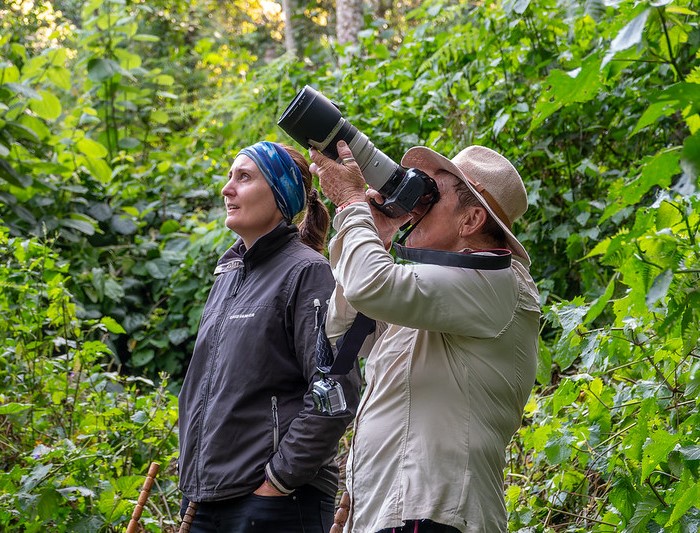At Adventure Out Loud, our goal is to ensure your trekking preparations are as easy and stress-free as possible. That’s why we’ve put together a comprehensive packing guide that details everything you need to pack for your gorilla or chimp trekking adventure. If you're traveling with us, we also work with you to recommend good, reliable brands where you can purchase any gear you need. Some of our suppliers offer discounts to our customers, so make sure you let us know if there’s anything you need to buy!
‘Download your free safari packing list’

Gorillas or chimp trekking
Gorillas and chimps often live in higher altitude (1,000 - 3,000m) rainforests where the temperature ranges from approx. 10 - 25 degrees Celsius. Here is a summary of the most important items that you will need to pack for your gorilla or chimp trek:
_1.jpg)
Other things you should pack for your African adventure
It’s nice to have something fresh and clean to change into at the end of the day and we recommend 1 - 2 smart casual dinner outfits. Remember that temperatures can drop quite significantly once the sun goes down, so plan your evening outfits accordingly. Long clothing is also advisable for insect protection. Also remember that Africa is a conservative region, and it is appropriate to wear clothing that covers the knees - this may be long pants, shorts, skirts or dresses.
For women, there may be some areas where wearing pants is considered inappropriate - these include religious sites or certain villages with highly conservative values. Your guide will be able to let you know about this the day before you visit, but it’s advisable to have at least one long skirt or dress (preferably ankle-length) in your luggage. some insects such as the Tsetse fly (found in Tarangire, Tanzania) and mosquitoes are attracted to dark fabrics, is also a good idea.
| Country | Plug(s) | Voltage | Frequency |
| Tanzania | D,G | 230 V | 50 Hz |
| Kenya | G | 240 V | 50 Hz |
| Botswana | D,G,M | 230 V | 50 Hz |
| Namibia | D,M | 220 V | 50 Hz |
| South Africa | C,D,M,N | 230 V | 50 Hz |
Optional items:
Upcoming gorilla and chimp itinerary ideas